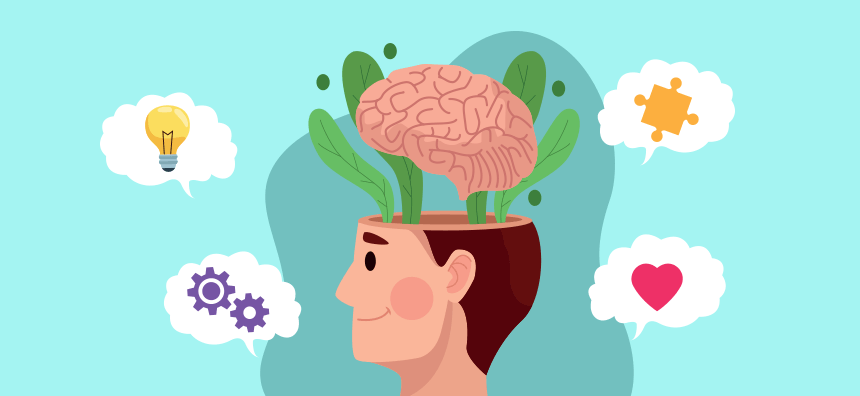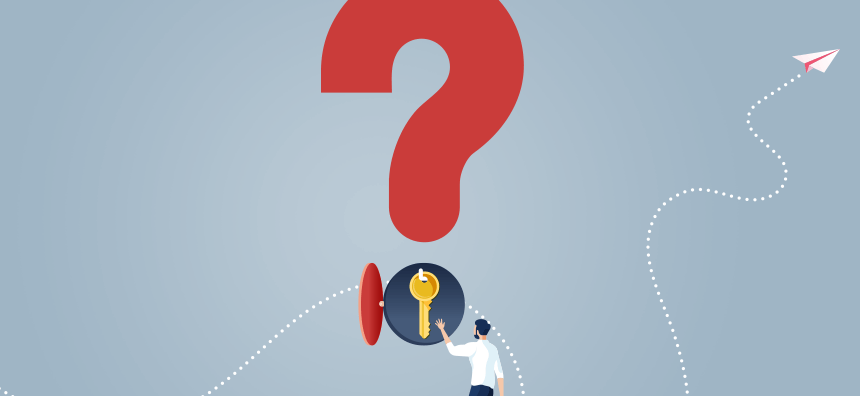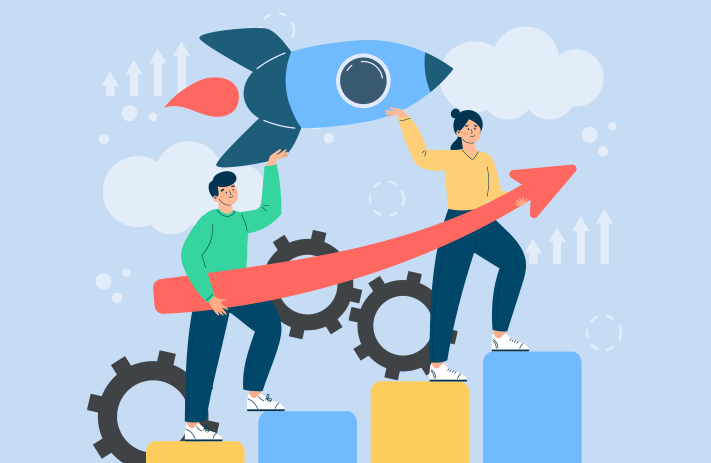
Click the button to start reading
Mindfulness in Sales: Skyrocket Your Career and Protect Your Health
Sales has always been a demanding job. Success requires a unique blend of resilience, constant motivation and charming personality. While currently underutilized, one of the most powerful tools at any salesperson’s disposal—for helping them achieve more success with a more sustainable work life—is mindfulness.
Great salespeople have to engage with their own emotions on a daily, hourly and sometimes minute-by-minute basis. They have to manage themselves as much as they do the people around them. Mindfulness is crucial for maintaining the kind of clarity and self-awareness required to be a world-class salesperson and sustaining that performance over a long career.
The problem, unfortunately, is that most salespeople don’t even know what mindfulness is…

What is mindfulness?
Mindfulness is awareness. To quote one of the leaders in mindfulness practice, Mindfulness is the idea of learning how to be fully present and engaged in the moment, aware of your thoughts and feelings without distraction or judgment.
It’s about observing what’s going on around you—on the street, in the room, in your head—and simply being there. Many people who think “mindfulness isn’t for me” or “it doesn’t work for me” are usually suffering from a misunderstanding of what mindfulness really means.
When we say mindfulness can help calm you during stressful situations, it’s not about convincing the brain to be calm; it’s not about achieving some goal like “calmness”. It’s just about being present. Being aware and seeing things how they really are.
Mindfulness is a practice. You need to work at it regularly, even for a few minutes per day. Deploying the “tools” of mindfulness takes time; it’s a resource you build up slowly, not a bomb you can detonate to remove a problem.
While we’ll only touch on mindfulness practice in this article, we will discuss the many challenges unique to salespeople that mindfulness can help overcome. If you like the sound of them, we strongly recommend investigating mindfulness and using it to take your career to the next level.

An essential ingredient for longevity
Burnout is unusually high among salespeople. Our scapegoat of long hours, weekend shifts, constantly hanging by the phone, always reaching for ambitious stretch goals—for a lot of salespeople, this is real life. It is an incredibly demanding career with no let up. Success breeds success and, in sales, hitting targets breeds higher targets.
When you add into the mix that these workers almost never experience true “time off” unless they’re on vacation, it’s no wonder that burnout is such a massive problem in the sector.
The problem with burnout is that it’s a manifestation of a gradual increase in stress: an extra hour here, a minor problem there. This eventually culminates in that state of total exhaustion brought on by long-term, unresolvable work stress.
And so one day the exhaustion just hits you. It feels like it’s come out of nowhere but in reality, it’s been slowly building and festering for a long time. Mindfulness can tackle the problem before it ever reaches this stage.

Connecting with what you’re really feeling
Practising mindfulness is predominantly about bringing awareness to the body. What’s going on? How do we feel? Do we normally feel that way?
It might sound like a tiny effort, but recognizing and acknowledging how and what you feel is the key to preventing burnout. It can be the difference between taking a couple of days’ rest and suffering a full-blown breakdown. It can be the difference between long-term sustained performance and being unable to work at all.
Anecdotally, mindfulness is used by salespeople to become aware of when we’re putting too much on our plate. It’s about moving away from that bad habit, addressing our emotional needs and stepping off the path to burnout.
Scientifically, work has recently been conducted which analyzed the effect of an 8-week mindfulness course on the Maslach Burnout Inventory—a test which measures factors like emotional exhaustion and depersonalization—and the results were very positive. Further studies on high-flying executives found that participants reported less perceived stress, improved physical and emotional health, enhanced sleep, better health-related habits and behaviors, and more self-compassion.
By noticing the symptoms of burnout before they take firm root, we can address them and protect ourselves over the long term.

Emotional intelligence and presence with customers
Most salespeople are obsessed with closing deals, constantly building relationships and opening doors, and generally going at 110% every day. And these are fantastic attributes in an industry that rarely lets you rest on your laurels.
As any good salesperson will tell you, personal relationships are fundamental to the majority of sales—especially over the longer term. Once price and product requirements roughly align, relationships take over.
Unfortunately, sometimes salespeople get caught up in the excitement and fervour of the job. It’s easy to come across as too pushy or aggressive; to go for the close too quickly; to misread the situation and let a deal slip away.
Being a top-tier salesperson requires well-developed emotional intelligence; mindfulness is one of the best tools for honing this skill.
How mindfulness “calms the beast”
There’s a part of your brain called the Anterior Cingulate Cortex that’s responsible for decision making, reward anticipation, ethics, impulse control and emotion—many of the crucial factors that determine a great salesperson.
Research from the Harvard Business Review found that mindfulness practice literally strengthens the ACC. This means a greater capacity to be “present” during conversations, to read emotions more clearly and not rush into decisions.
Part of mindfulness is learning to slow down and really take in our surroundings. When your brain is whirring along at 100mph, the practice of mindfulness means you can slow yourself down and truly focus on what the prospect is saying. You can deliver a more personable experience and be fully engaged in your conversations.
In other words, mindfulness can make you one hell of an attentive salesperson.

Coping with rejection
Part of the job if you work in sales is getting rejected. A lot. And while it’s easy to give advice like “don’t take it personally” or “treat it as experience”, it’s much harder to put that into practice.
A huge problem is that this kind of advice isn’t really actionable. It convinces us that we need to combat how we’re feeling. You need to believe that it’s them, not you; you need to believe rejection isn’t personal. When you’re feeling down or depressed with the constant rejections, you might find yourself trying to convince yourself that you’re actually happy and optimistic.
After all, look at all these opportunities for growth!
As you might expect, this rarely works. A core aspect to mindfulness is observing your thoughts and emotions, but not interfering with them. Say a rejection email lands in your inbox and it makes you feel like crap. Do not try to talk yourself out of feeling bad. Rejection sucks and it’s okay to feel that way.
This is where your mindfulness training comes in. You simply stop and observe the emotion. You find some inner calm. You are slowly able, as you sit there patiently observing your feelings and your breath, to put the rejection into context. You’re able to accept it, emotionally, without it being overwhelming. You’re better able to refocus and continue your day with a strong, forward-thinking mindset.
Improving your pitch and offer
We’ve already mentioned the ability to take rejection like a pro and move forward—but that’s not all you should be doing. A crucial part of rejection is taking the time (with a clear head and no bitterness) to understand why they said no. Mindfulness is a brilliant “hack” for giving you the clarity required to truly assess your pitch, delivery, offer and choice of prospect.
Now that you’re centered and “recovered” from the rejection, it’s time to get analytical. What could you have done differently? How did you deliver your pitch? Can you ask the prospect why they said no, in order to build your presentation for the future?
Trying to engage in this process without a clear head (i.e. without practising mindfulness) will lead you down false paths. You might decide the prospect was simply an idiot for not choosing you; no need to think about them!
Or worse, you’ll assume you are personally the problem: you’re not likable, not charismatic, not clever. This is an extremely common rabbit hole for salespeople to fall down, and simple mindfulness can keep your feet firmly on the ground.

Calmly navigate stressful situations
Every now and then a high-stress situation will hit you like a train. In sales, these situations come up far more often than in most other roles, building on one another over the course of the day. If we haven’t sufficiently recovered from the previous stress trigger, our stress levels rise to unhealthy levels.
Mindfulness helps us recover faster between triggers. This means that our peak stress level doesn’t compound and grow, allowing us to remain more neutral and balanced.
Mindfulness is the most powerful tool in our arsenal for reducing our reactive, fearful responses to these situations—but it’s not a switch you can simply turn on and off. Building this kind of capacity for managing stress takes time. It takes repeated, short practices over the long-term.
Consistent application—even in situations where you aren’t stressed at all—is probably the most vital, and most difficult, aspect of mindfulness.
How does this help with sales?
The more you can control your stress response over the course of a day or week, the better you can deliver pitches to clients, generate creative ideas, and weather bad news. Over the long term, it’s exactly this kind of response that prevents burnout and allows us to sustain our intense work style.

Connection to bigger goals and purpose
Something that sales roles demand more than almost any other is the need to be in the moment. You’re juggling a dozen different conversations at once; they’re all different, challenging, and all want special treatment.
As we’ve seen, mindfulness is extremely powerful for allowing you to stay calm, grounded, and present with all this chaos going on—but what about the bigger picture?
Working in sales, it can be challenging to stop and truly consider the context of our work. What am I really working towards?
Mindfulness has this funny habit of making us realize what the bigger picture is. In most cases, it’s not really hitting a sales target or shifting 20,000 units of whatever—it’s making a life for our kids, or making money to buy a house, or that our identity is tied to success at work. For you, it’s probably something equally serious and more meaningful than simply selling.
While it’s not the “goal” of mindfulness to consider these things, it is a by-product of the process. The clarity we can harvest in terms of what we’re doing and why (really why) is extremely empowering. It can make rejection easier and it can prevent us from chasing down bad opportunities, as well a helping us find greater fulfilment in our daily work.

Why isn’t mindfulness common practice already?
For many, it’s the simple perception that mindfulness is some woo-woo airy-fairy nonsense—something that hard-hitting, strong, successful salespeople don’t have time for. This perception is changing, however.
As the wider world wakes up to the idea that mindfulness doesn’t mean living on a mountain and foraging in profound silence for five years, but is in fact an immensely powerful tool for creating more impactful, centered, meaningful lives, it is becoming much more prevalent in all sectors.
For others, it’s simply that they’re “too busy”. “Come on. Right in the middle of a crazy day with meetings, client visits, calls, and slowly sinking into the ground, and you want me to stop everything and just “be” for 10 minutes? That’s crazy talk!”
But actually, that’s the whole point. You need to stop now and then to prevent that burnout, cope with stress and get clarity on the big picture. It’s about the quality of time, not just the duration.
- 10 minutes more work is just 10 minutes of work.
- 10 minutes of mindfulness practice is a significant investment in your future self (and you can even do 10 more minutes’ work if you really need to!)
In the long run, mindfulness might save you hours of work or generate thousands of dollars in revenue. The hard part is that you need to commit now, with small daily practice, in order to get that long-term payoff. And that’s probably the biggest reason why we haven’t (yet) seen mindfulness really penetrate the sales industry.

Quickfire “hacks” for high-pressure situations
Okay, we’ve talked extensively in this article about how mindfulness is a practice that’s honed and developed over time. There are no shortcuts or hacks.
Well, here are two quick hacks you can instantly deploy when faced with a particularly stressful situation. It might be something we’ve covered, like a serious rejection or the anxiety of an upcoming pitch, or some other uniquely stressful situation.
Focus on the breath
Set a 10-minute timer on your phone, put it to one side, then sit down in a comfortable chair. Then start breathing: in through the nose, out through the mouth.
That’s it. Don’t try to solve your stressful situation or “address” your emotions. Just keep breathing and focusing all of your attention on that breathing. Do this until you’ve done “quite a lot of breaths”.
Next, you’re going start taking deliberately slow breaths:
- 3 seconds inhale
- 4 seconds holding your breath
- 5 exhale
And keep going. Every time your mind wanders to something else, just bring your attention back to your breath. How does it feel? In out, in out. You can stop when your timer goes off.
Or, if it actually feels quite good, keep going for as long as you want, always bringing the attention back to your careful breathing. You might just find that when you’re done, that terrifying stressful situation is looking a whole lot more manageable than when you started.
Do absolutely nothing
The next time you have a break in your schedule, don’t take out your phone. Don’t strike up a conversation, start new work, or go make a coffee. Instead, go find a quiet spot and sit yourself down.
Then set a 10-minute timer and just sit there. Let the mind go wherever it wants without focus. Close your eyes if you want. If you find yourself focusing hard on a particular thought, try to let it go.
This is going to feel weird. But, like the previous exercise, you’re probably going to come out of your reverie (which will feel like way more than 10 minutes) with an unexpected sense of calm rationality. Make sure to stick the 10 minutes out and warn colleagues not to interrupt you, if necessary.
Conclusion
Like we’ve said throughout this piece, sales is an intense job. You’re constantly fighting deadlines, often scrambling and desperately trying to stay calm, personable and charming to your prospects. Mindfulness is quite possibly the most powerful way to control your emotions, build resilience, and protect your health in this line of work.
Over the long term, an investment in mindfulness will build extraordinary interest and the return will be enormous. Make your first deposit today by following a quick 10-minute breathing exercise or, even better, using an online service for guided meditation.
It might just unlock a whole new world of sustainable sales success.
















